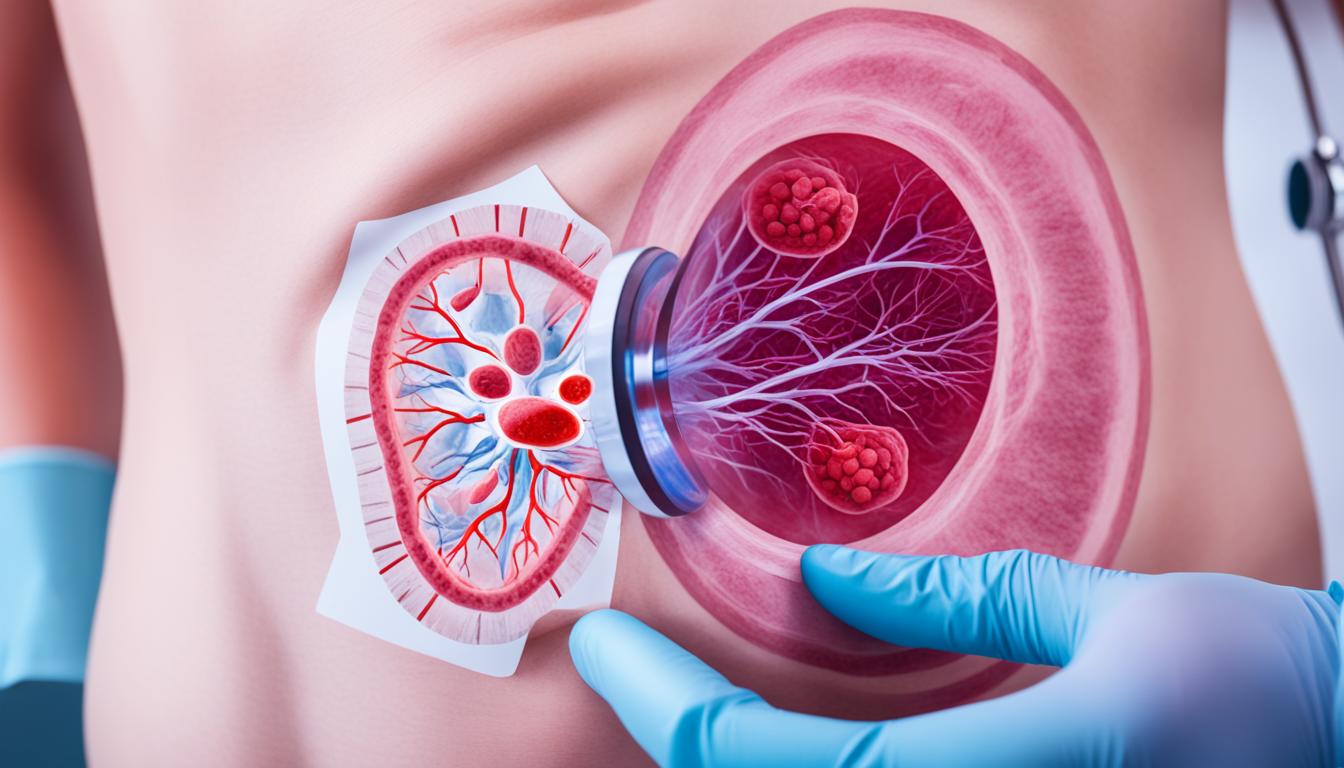A hernia is when organs push through muscles, usually in the belly, chest, or hips. An umbilical hernia happens when the intestines’ fatty parts poke out near the belly button. This can be due to many things like getting older, being male, or a cough.
Symptoms of an umbilical hernia are important to spot for starting treatment. Look out for a bump near the belly button that goes away when lying down. You might feel full or have trouble moving your bowels. Other signs are bulging in the groin or scrotum and pain when active.
Surgery is often needed with larger hernias in kids to avoid more serious issues. Smaller ones might just need to be watched. The type of surgery depends but might be done with a camera, by cutting open, or with the help of robots.
Key Takeaways:
- An umbilical hernia occurs when fatty tissues in the intestine push through the abdomen near the navel area.
- Causes of umbilical hernia include age, gender, congenital factors, and lifestyle choices such as smoking or obesity.
- Symptoms of umbilical hernia include a noticeable lump or bulge, fullness, and pain during physical activity.
- Treatment options for umbilical hernia include watchful waiting, surgery, and robotic hernia repair.
- Early diagnosis and treatment are essential to prevent complications.
Umbilical Hernia in Infants – Causes, Symptoms, and Treatment
Umbilical hernia is common in infants, especially those born too soon or small. More girls have it than boys. It happens when organs push through a weak spot near the belly button.
Causes of Umbilical Hernia in Babies
The main cause is a gap in the stomach muscles after birth. This gap comes from the path the umbilical cord takes during pregnancy. Even if it runs in the family, most times, it’s just part of how a baby grows in the womb.
Symptoms of Umbilical Hernia in Infants
- A soft lump or tumor seen in the belly button area when a baby coughs, cries, or pushes.
- The lump goes away when the baby is calm or lying down.
Treatment for Umbilical Hernia in Children
Most umbilical hernias get better on their own before a baby turns 1. But, if they don’t, or they’re big or hurt, surgery might be needed. Doctors see if the hernia is a problem and decide if it needs to be fixed with an operation.
Please note: Never try to fix a hernia at home with tape or any bandages. Always talk to a doctor. They know the best ways to help.
Advances in Hernia Surgery – Tissue Engineering and Stem Cell Therapy
The world of hernia surgery is changing fast. It’s seeking new, better ways to help patients, especially with hard cases. A key new idea is to use biological technology to make healing faster and cut down on problems.
Scientists have been looking at covering special surgical meshes with the patient’s own cells. This not only makes the meshes work better with the body. It also lowers inflammation and lessens how much tissues stick together.
Research shows that using platelet-rich plasma (PRP) and cells from bone marrow (BM-MSCs) boosts the wound healing process and makes hernia repairs stronger. In one case, a patient had PRP and BM-MSCs placed on a mesh to fix an abdominal hernia. They didn’t have the hernia come back for two years after the surgery.
These new steps seem very promising for making belly repairs better, especially in tough hernia cases. But, they still need a lot more testing to make sure they are safe and do the job well.

